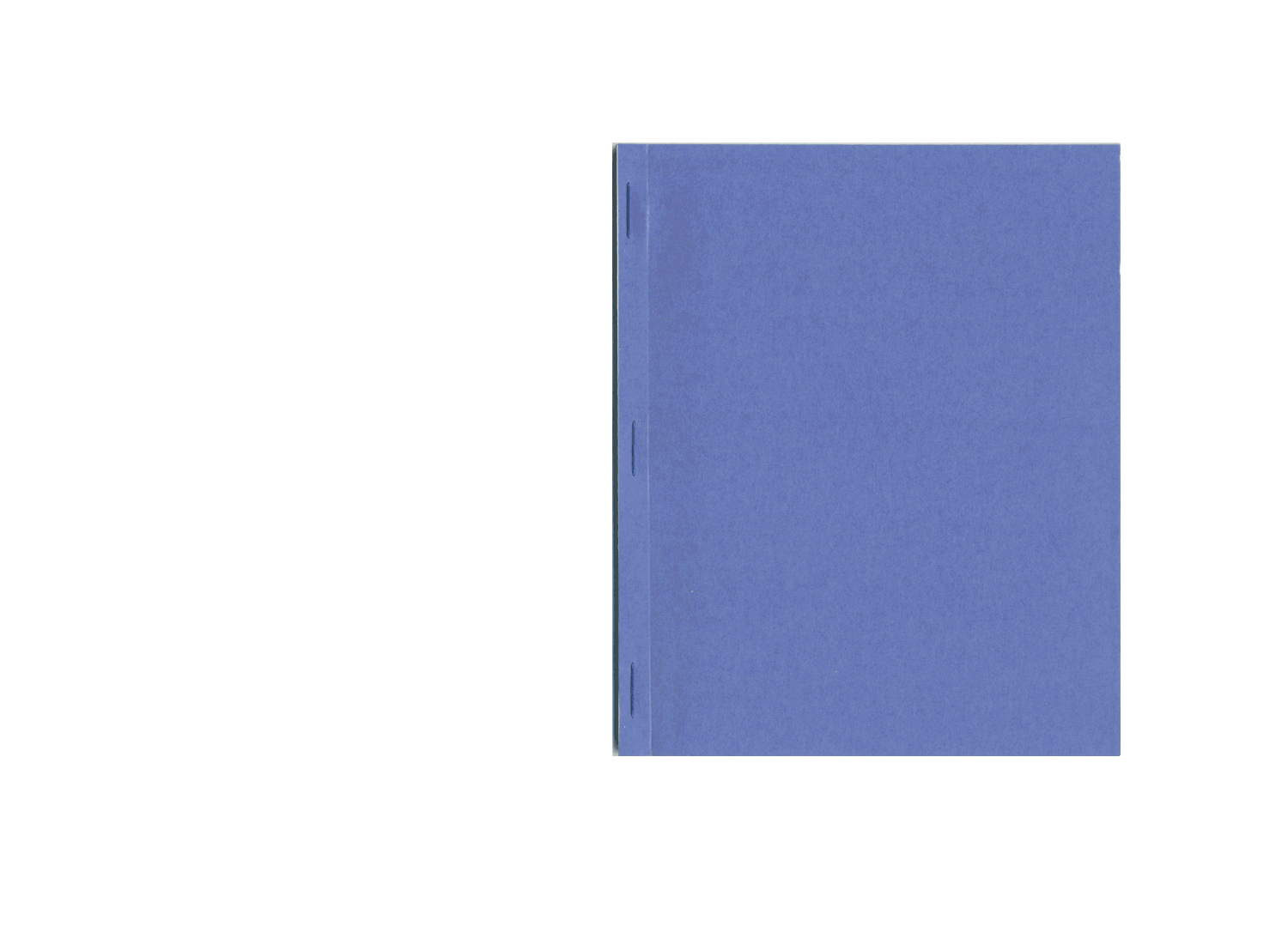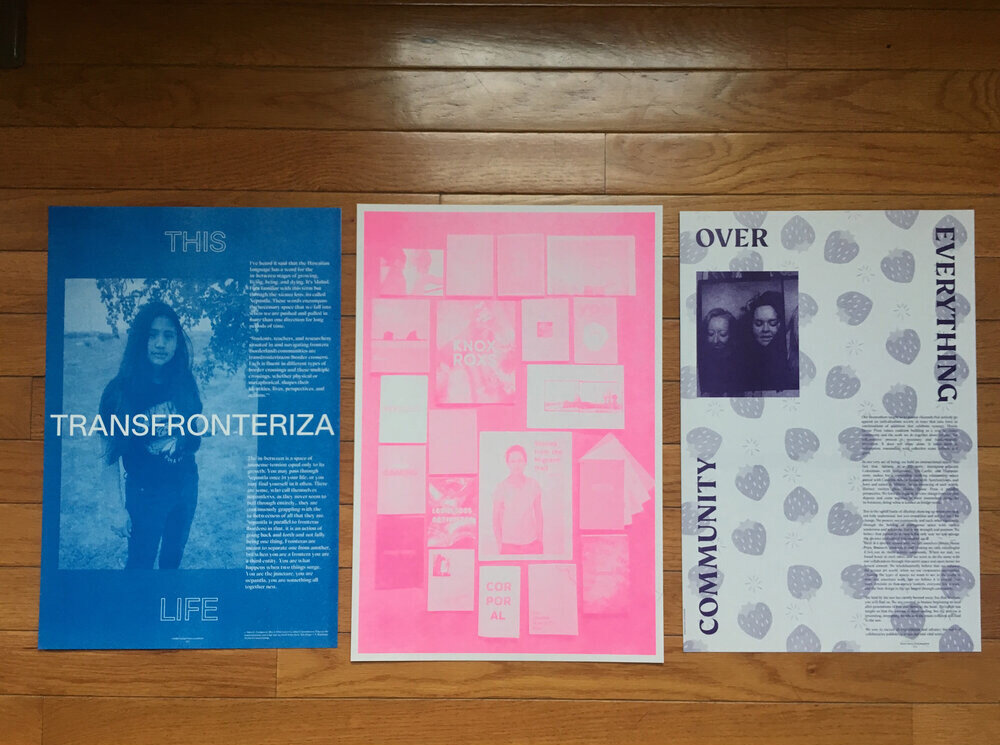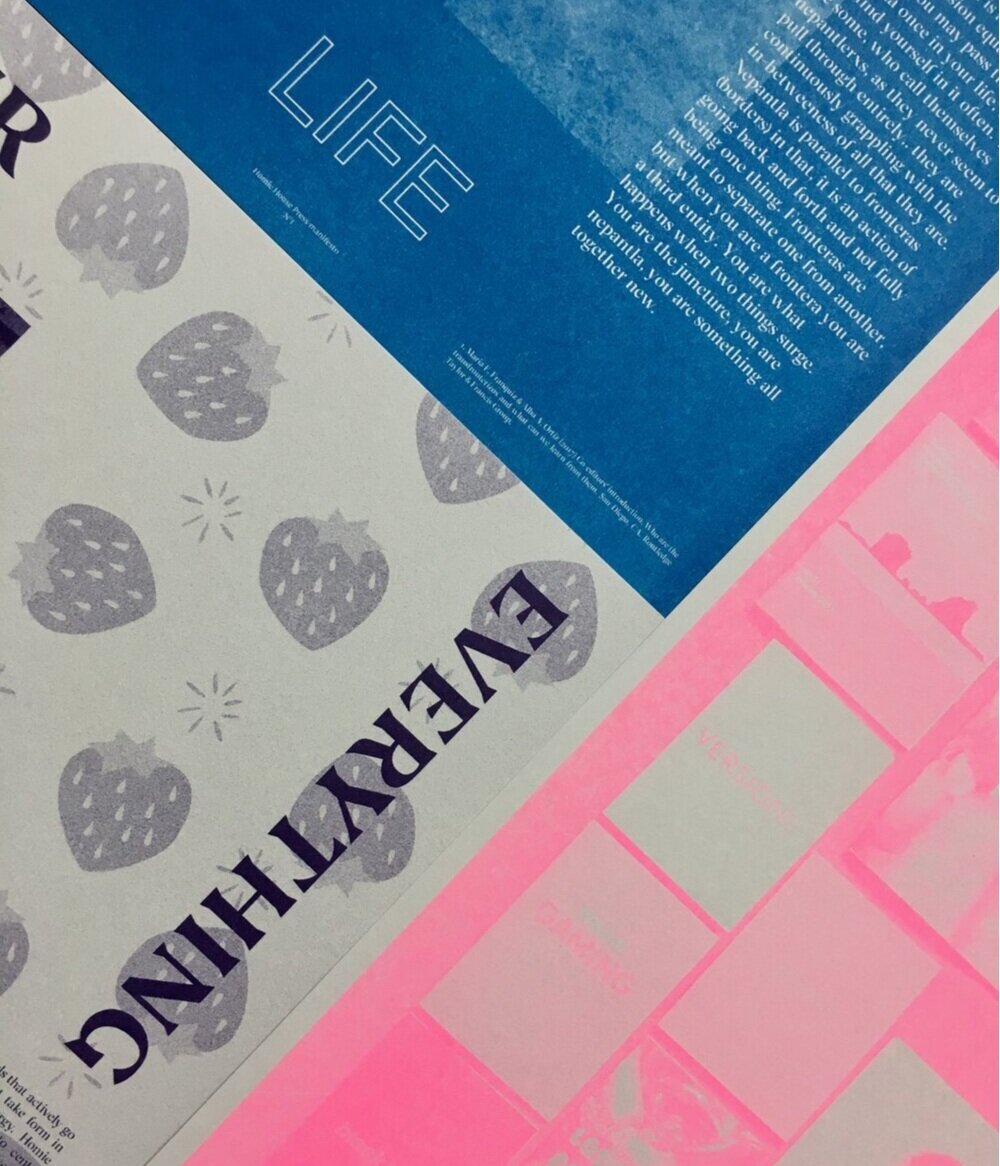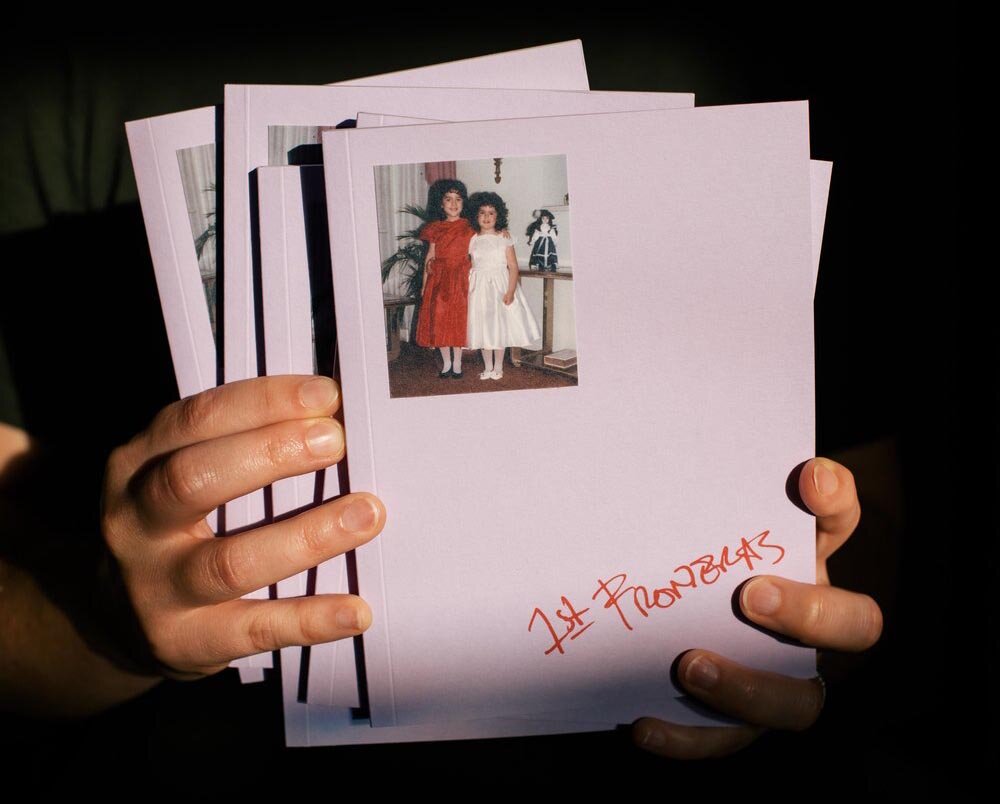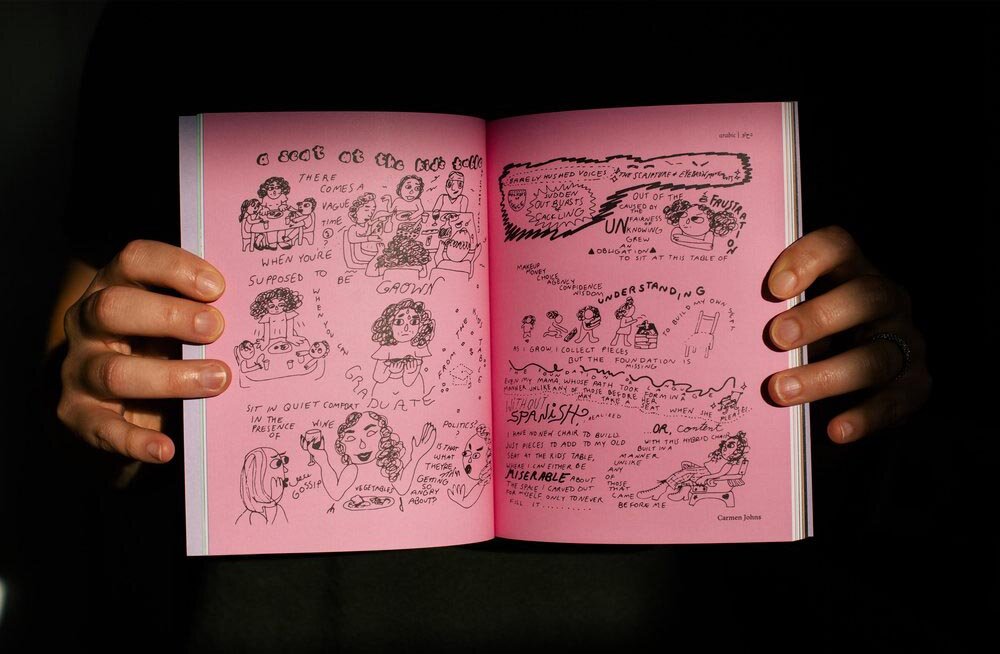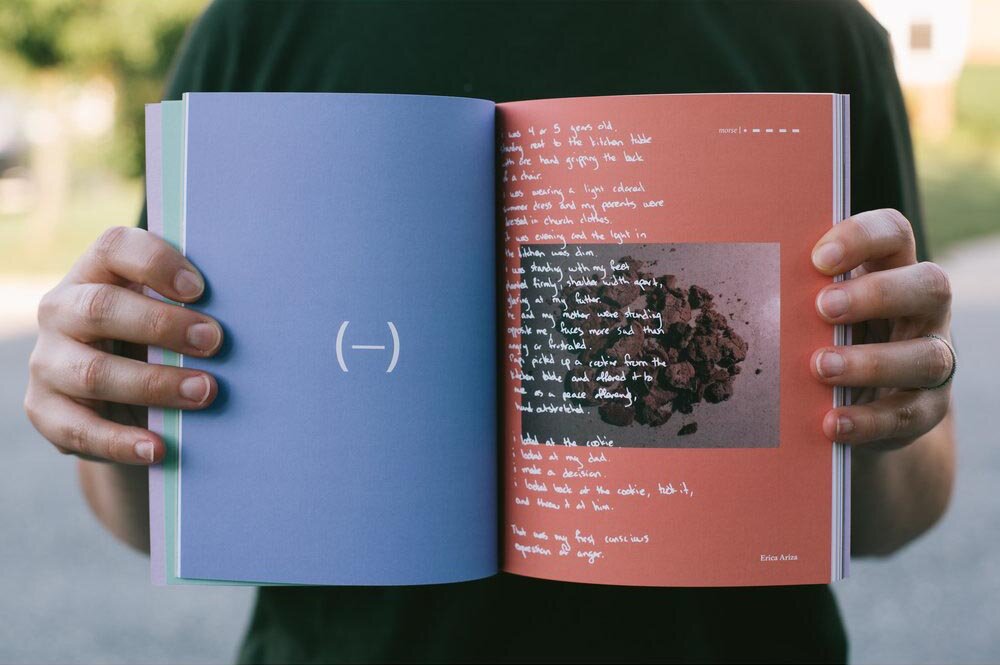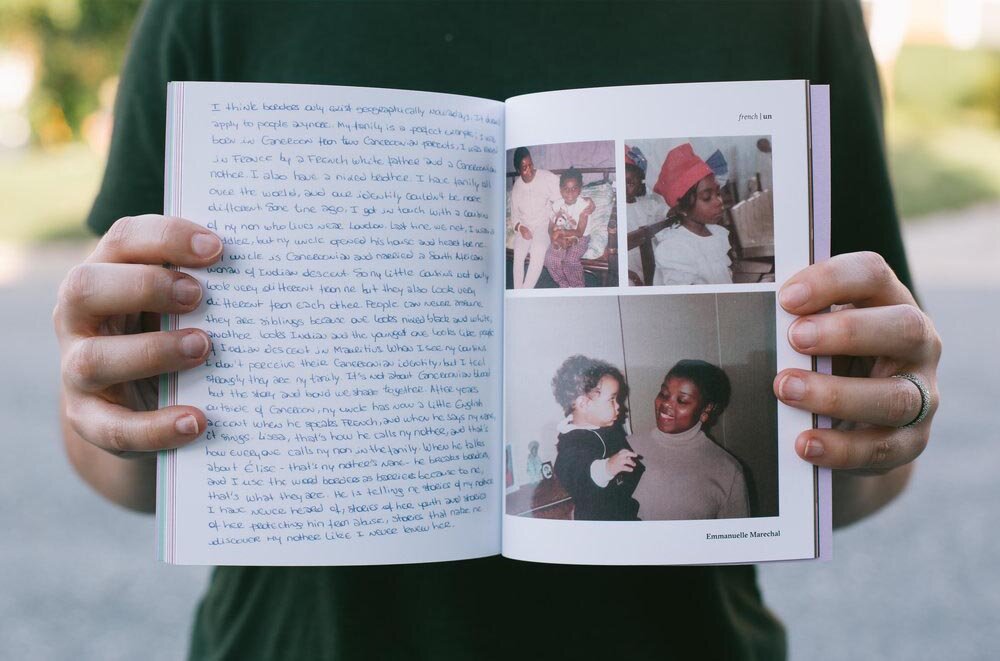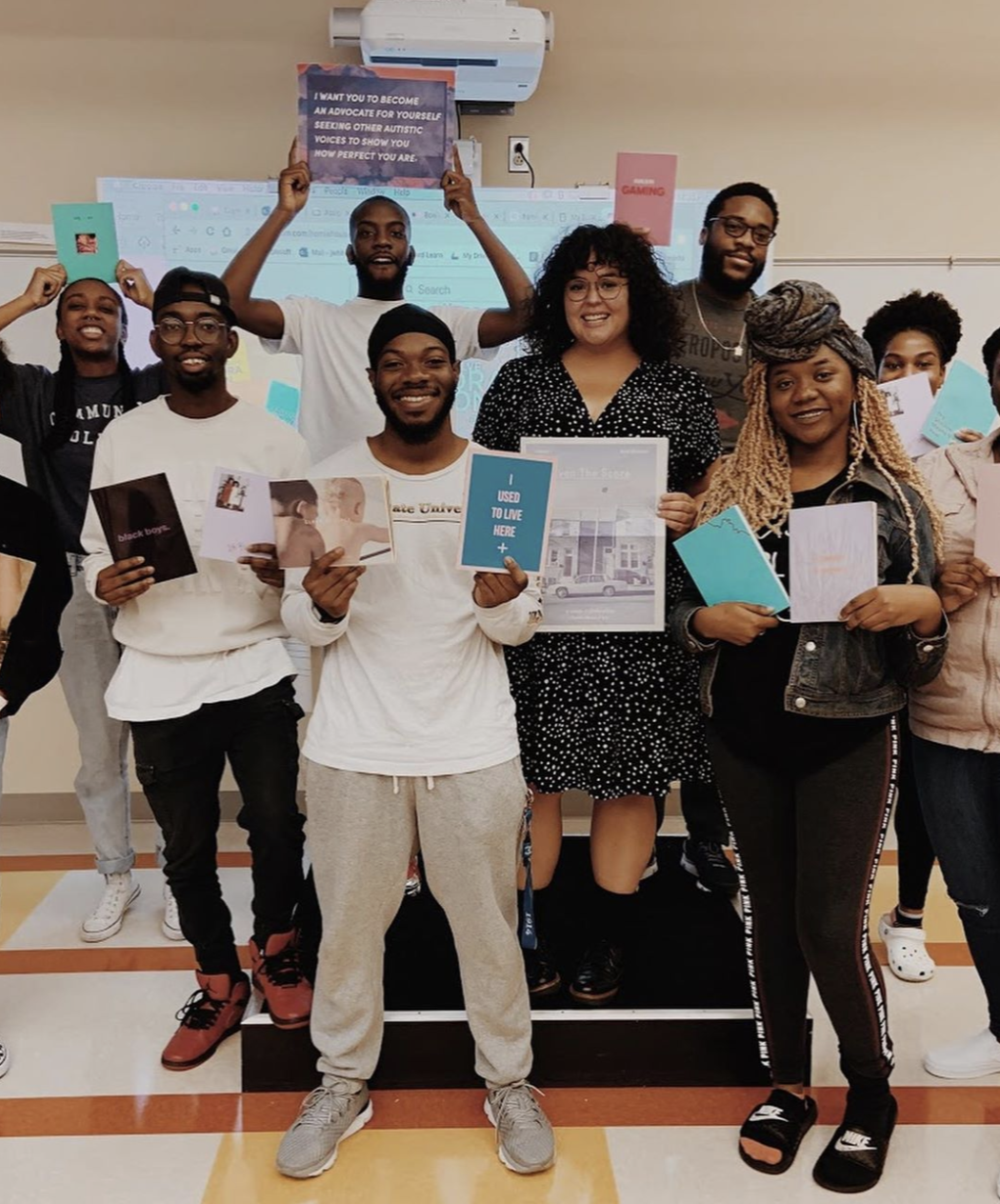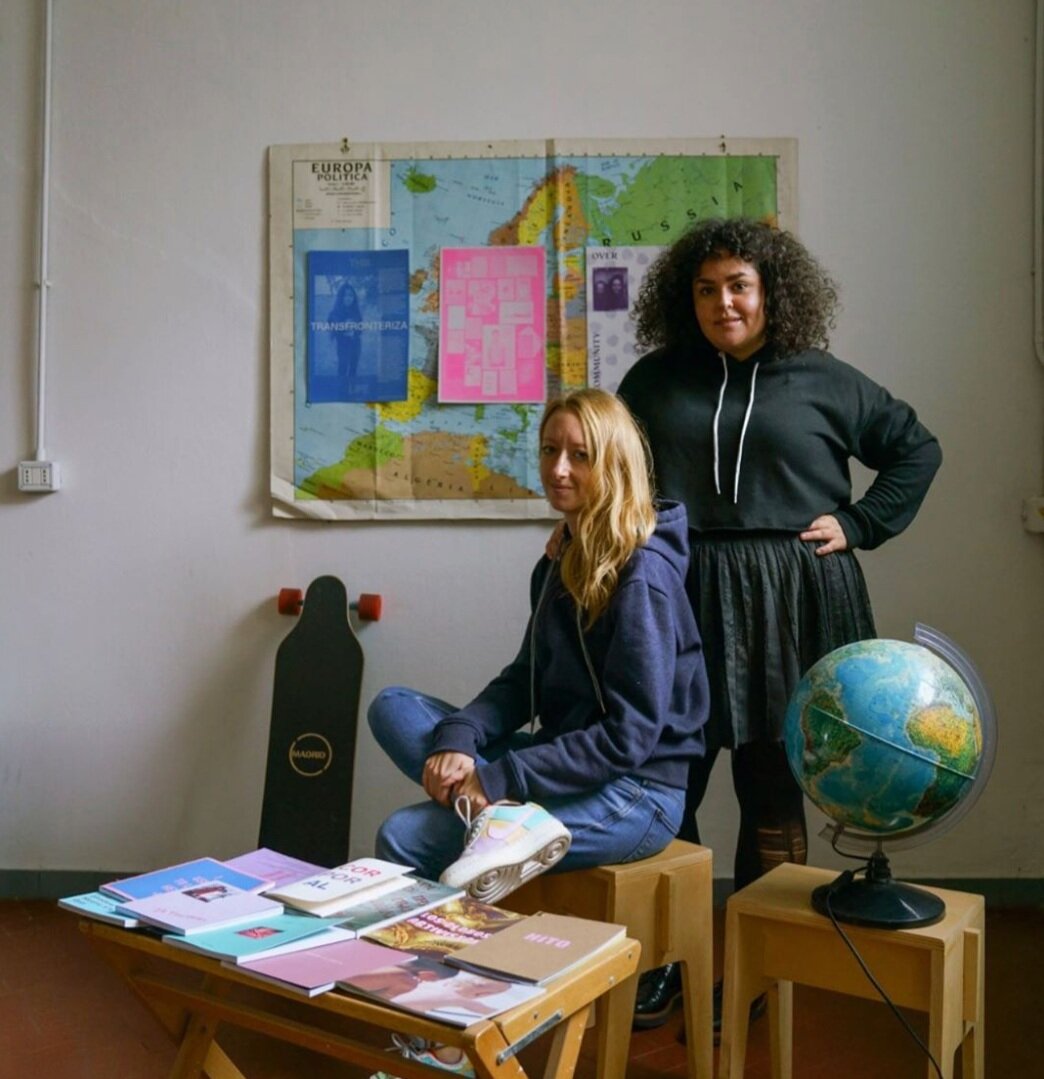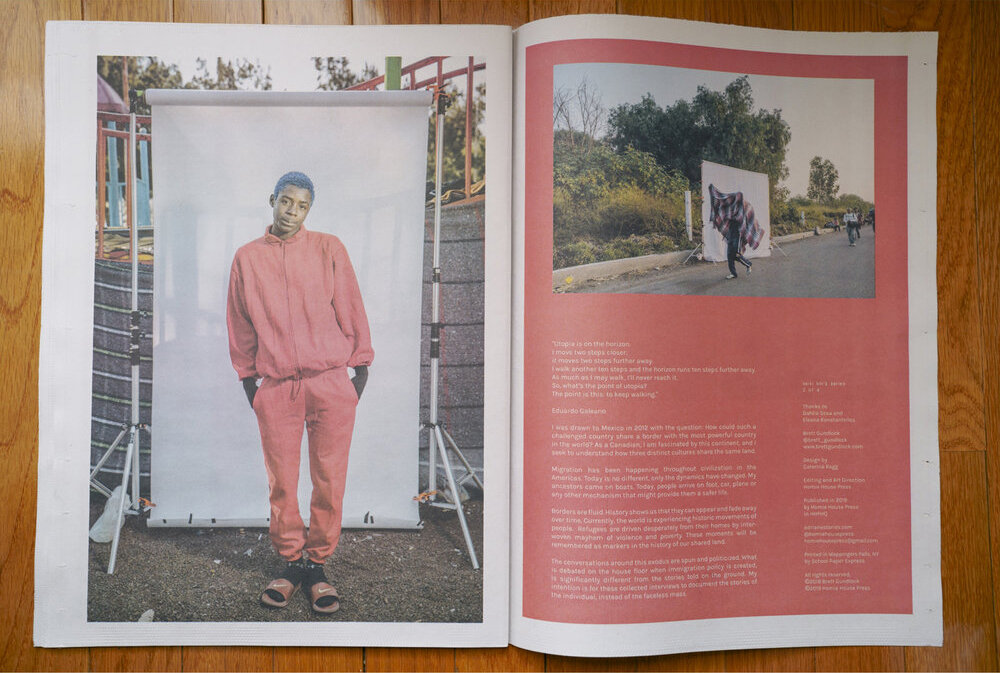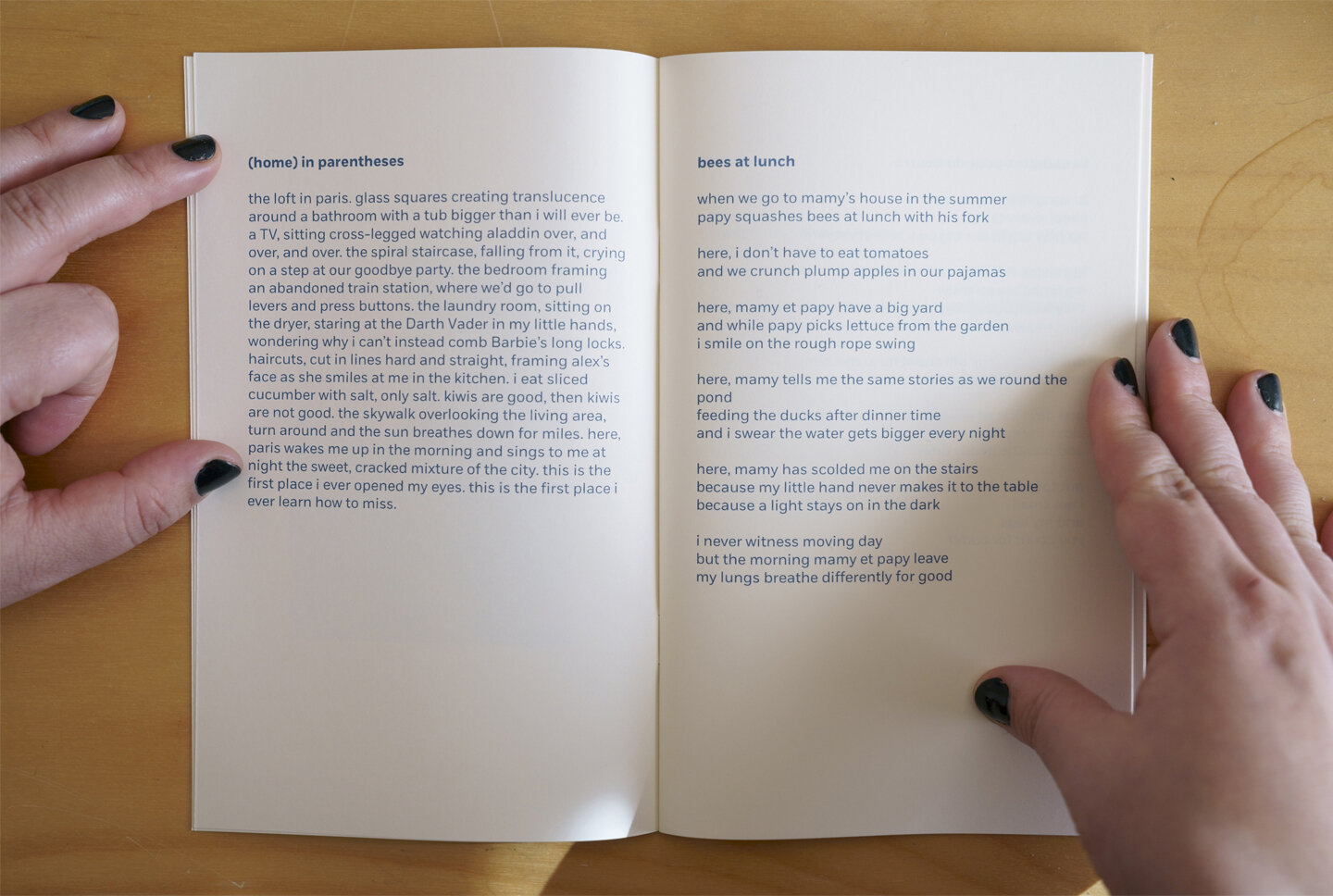Q&A: Adriana Monsalve / Homie House Press
By Rafael Soldi | February 13, 2020
Adriana Monsalve is an artist and collaborative publisher working in the photobook medium. Along with Caterina Ragg, Monsalve is co-founder of Homie House Press, a radical cooperative platform that challenges the ever-changing forms of storytelling with image and text. The works of Homie House Press have been collected in the Library of Congress, Thomas J. Watson Library at the Metropolitan Museum of Art, National Museum of Women in the Arts, and the Maryland Institute College of Art, among other, private collections.
Within her photographic practice, Monsalve is a storyteller and visual communicator who produces in-depth stories on identity through the nuances in between. As a daughter of immigrants from the Caribbean Republic of Colombia, she has struggled with the concept of 'home.’
Adriana Monsalve earned a Masters in Photojournalism with high distinction from the University of Westminster. She was awarded the Lucie Independent Photo Book Prize for her collaborative photo book, Femme Frontera, a project which was funded by the National Association of Latino Arts and Cultures and was part of the Master Artist Grant of 2017.
Rafael Soldi: Hi Adriana. Thanks for chatting with us!
Adriana Monsalve : Happy to do this ^_^ thanx for inviting me
RS: Can you briefly tell us about your journey thus far? How and why did you arrive at Homie House Press (HHP)?
AM: Homie House Press is a collaborative project that we—myself and Caterina Ragg—developed in reaction to our various encounters within the field of Photojournalism. We first started working together while studying at the University of Westminster in London. After graduating, we researched channels to tell our stories in the traditional spaces of photojournalism, where we were struck by the regulations founded in the field, i.e. staying “objective,” keeping a safe distance from ourselves and the story, from the “subject” and our own lives. We found barriers continually rising against us when showing photojournalism institutions our work. We were bringing in-depth long-term storytelling, that was personal and political at the same time, while the outlets we were in contact with were looking for surface, one-dimensional images. Additionally, we faced the problems that arise from a lack of ethnic, racial, and gender diversity, as some of the only womxn and/or womxn of colour working in those spaces. Our artistic practice is not here to please the viewer, but to challenge them with concepts that we value meaningful. In a society as divided as ours, the role of the artist is to educate and unpack uncomfortable topics.After our experiences in these spaces, we needed to decolonize the platform by holding space for personal storytelling and making space for our communities, and thus, HHP was born. HHP serves as an alternative, new-school, photojournalism platform that focuses on communities working from within the margins of our society, to represent personal experiences as they really are, rather than through the mediated gaze of traditional photojournalism. It combines our passion for photojournalism, storytelling, graphic design, photography, performance art, and artivism, as a means to deconstructing the traditional approach. The thinking behind our practice constitutes searching for stories that are, quoting performance artist Franko Black, “personal, political and poetic.” In contrast to contemporary photojournalism, we believe in slow journalism. Some of the stories included in our publications take years to produce. Since the stories HHP surfaces are born from the personal experiences of our collaborators, our process must facilitate self analysis, struggle, research and sacrifice.
RS: I think a great place to start is HHP’s three-part manifesto. What is the manifesto? Why does it exist?
AM: The three-part-manifesto is series of posters printed in vibrant risograph colors that explains the stance and purpose of Homie House Press. The first piece focuses on the space we so often talk about and find ourselves navigating through—the in-between. It's called This Transfronteriza Life. Here is a quote from the first poster:
"The in-between is a space of immense tension equal only to its growth. You may pass through Nepantla once in your life, or you may find yourself in it often. There are some, who call themselves nepantlerxs, as they never seem to pull through entirely.. they are continuously grappling with the in-betweeness of all that they are. Nepantla is parallel to fronteras (borders) in that, it is an action of going back and forth and not fully being one thing. Fronteras are meant to separate one from another, but when you are a frontera you are a third entity. You are what happens when two things surge. You are the juncture, you are nepantla, you are something all together new."
The second piece focuses on the ways we are using the photographic medium combined with text to subvert photojournalism and challenge the ways the mainstream has told our stories for us, its entitled Personal Political Poetic. The third piece focuses on the collective way we approach the art world. The art does not come first; instead, the collaborative effort within community is what we value and hold above all else. The work is important but only when it is done cooperatively as restorative and transformative work. That final piece is entitled, Community Over Everything.
It’s been three years since we launched our platform. We felt now was a good time to claim the space we have created and state clearly who we are, and why we are here.
This Transfronteriza Life by Homie House Press
RS: Though your work at HHP is heavily influenced by the stories of immigrants, you are interested too in how these elements of fear, isolation, displacement can be mirrored in the everyday lives of others who may not be immigrants. In First Fronteras, you ask a group of people to interpret their first frontera—the first attack the world did on them. Can you expand on this project, and how you took a term usually associated with immigration and expanded it to tell the story of many?
AM: Yes, this project started with experiences of Nepantla (explained in prior answer) and Transfronteriza identities. Within that space, is where the idea for this book came to be. First Fronteras is a delicately sensitive and tender project that looks at the ways we handle the barriers we come up against in our lives. These are not simply walls, they are wounds that have effected the trajectory of our lives. They are what we remember as our first assault by the world we grew up in.
I was seven years old the first time I realized that the person I knew myself to be was wrong. I knew at seven, that being alive as I was, was a dilemma. I learned to hide, and we all do this on various levels. We put up fronts to protect our unspoken and unexpressed selves. Sometimes it is easiest to conceal our truths by blending in. Since then, I’ve learned to embrace the other, by embracing the self. There is such power in cradling the part of our identity that we were taught to be silenced and ashamed of. Own yourself. I am mine.
This collective project is a continuation of the body of work, Femme Frontera, that I initiated in 2017. It is a collaborative action in which we asked a vast variety of individuals to share the first frontera that they remember being confronted with. We are embracing the word frontera in all its contexts. It is not limited to landscape or environment, it is to be interpreted in countless ways. We are specifically cultivating a space for the nuance of this experience with this project. You will find the content to be made up of submissions from artists and civilians that were asked to draw / photograph / doodle / paint / collage (whatever they wanted really) their first frontera. Some of the collaborators have created work that is elaborate, others have done simple doodles, but the sentiment is the same— the tumultuous space that is the first wall they can ever remember coming up against. Along with their artwork, they have shared with us some sentences in their own handwriting about the said border.
RS: Let’s talk a about collaboration. HHP is a collaborative effort, and lately you’re expanding your reach to include books in collaboration with other artists. What is your relationship to collaboration, and how have these partnerships challenged and influenced your work at HHP?
AM: We value coalition building as a way to center community and the work we do together above all else. The collaborative process is necessary and fundamentally important. It does not come alone, it takes form in redemption, resounding with collective scars, failures, and glory. In our (HHP) very act of being, we hold an intersectional space. The fact that I am a US born, immigrant-adjacent Colombian, with Indigenous, Afro-Caribe, and European roots, makes for a compelling working relationship when paired with Caterina, who is Italian with Austrian roots, and born and raised in Milano. The interweaving of such widely distinct entities gives Homie House Press a peculiar perspective. We have the capacity to view things from varying degrees and come together to meet somewhere along the in-between, doing what is known as bridge-work.
This is the uphill battle of allyship; showing up when you may not fully understand, but you empathize and see the need for change. We protect our community and each other rigorously, through the holding of courageous space with radical tenderness and solidarity. This is our strength and purpose. We believe that person-to-person is the only way we can salvage the divisive methods of this modern age.
There is a specific reason why we call ourselves Homie House Press. Research, production, and creating are only meaningful if we can do them within community. When we met, we found home in each other, and we want to do the same with our collaborators through this secret space and open house for honest content. We wholeheartedly believe that we enhance the greater art world, when we use cooperative approaches. Creating the types of spaces we want to see in the world is slow and uncertain work, but we believe it is crucial. This work reminds us that agency matters, everyone has a story, and the best things in life are forged through community.
RS: One of these recent, successful collaborations was the book Self/Ser by River Coello. What a beautiful book—can you share a little bit about it and how you worked together to arrive at this final form.
AM: We adore River… such an angel on this earth. River approached us at a fair we participated in called Foto Mercado, in Chicago last year. They were interested in publishing their first manuscript of poems with us! We primarily work in a space where photography is heavily centered, so we told River that we love the poetry—cuz it is phenomenal—but we needed to include some imagery and if they would be interested in exploring that. And, fortunately for us, they wanted to! So we suggested going through family foto albums and selecting some images that related to the poems. They also have done quite a bit of modeling work—so we had a lot to work with! Between the poems, family fotos, and modeling images, we had plenty too work with. River was so gracious with us. All they told us was “I want a non-book, something that celebrates the duality” —so we stuck to that as best as we could, with including everything in both languages and setting it up like less of a book and more of a moving work of art. This collaboration worked in such a beautiful way because River trusted us fully with what they wanted to create and put forth into the world, and we in turn did the same. It’s rare when it works so seamlessly.. we really value that in ways River will never know.
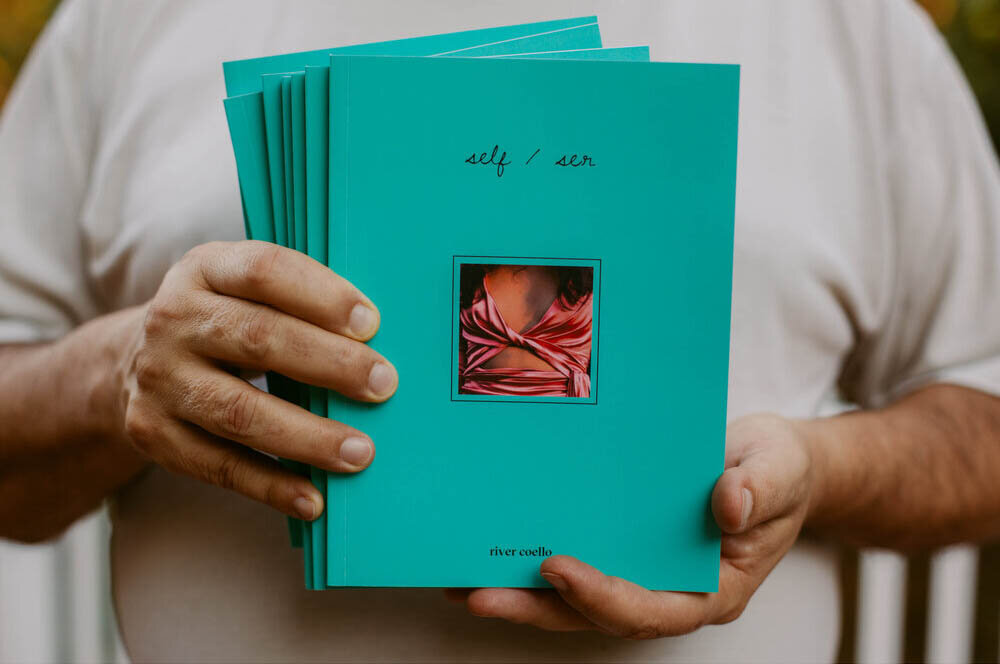
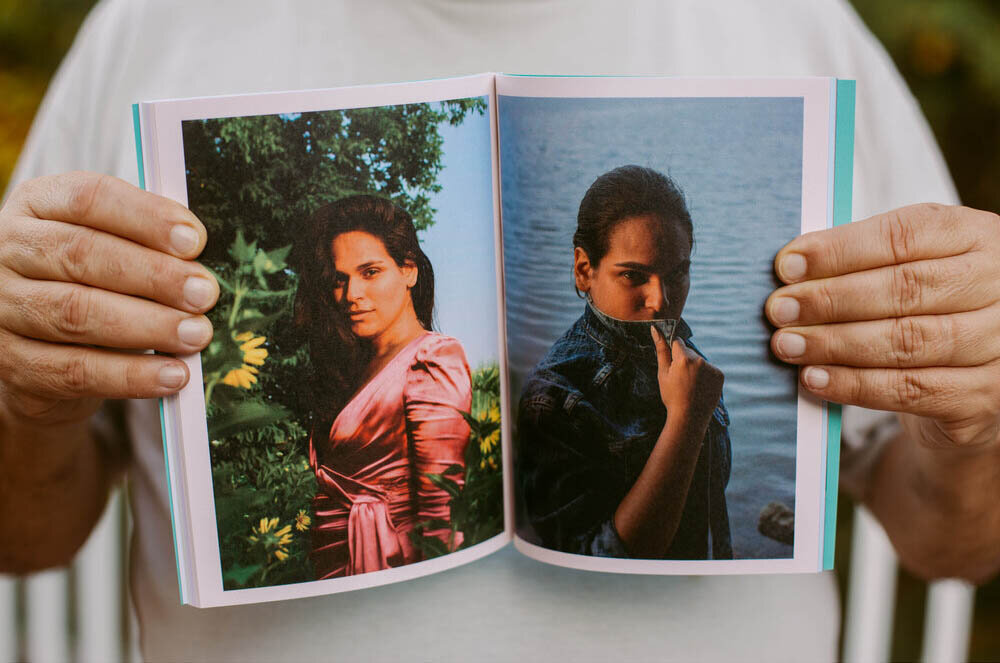
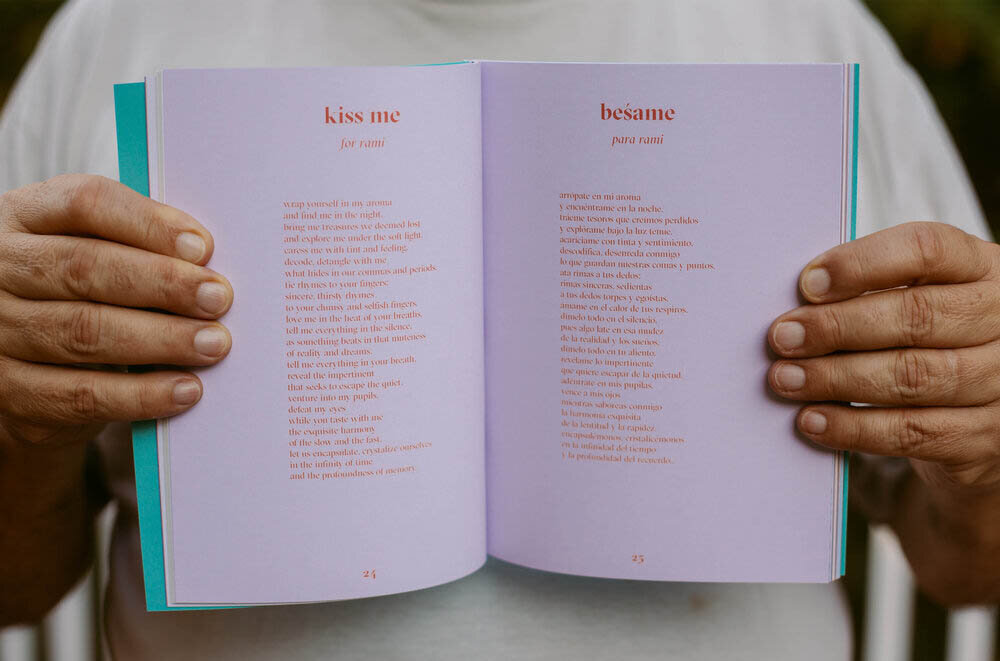
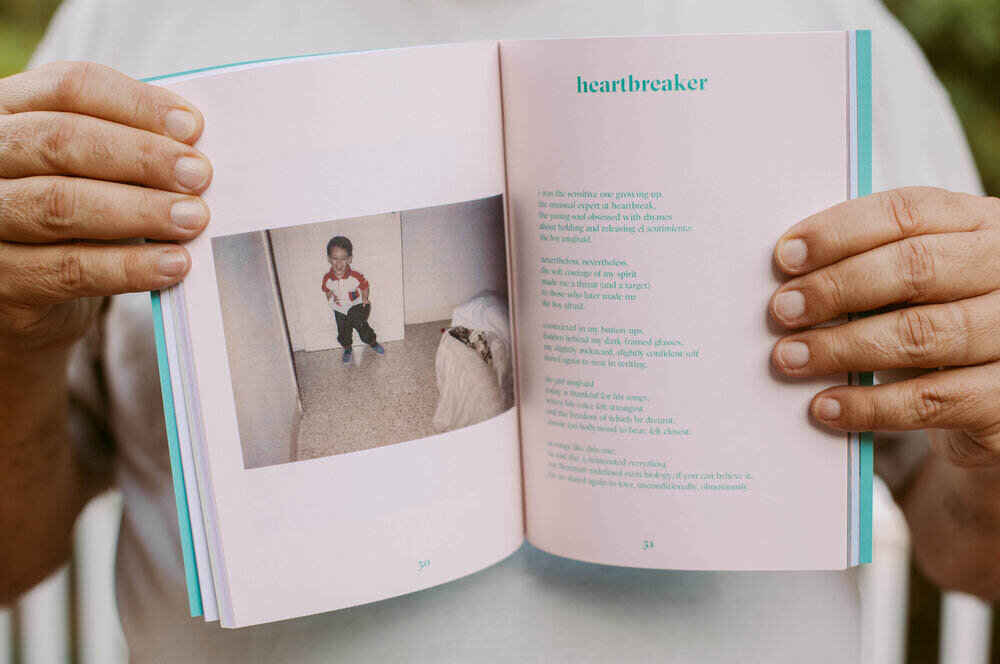
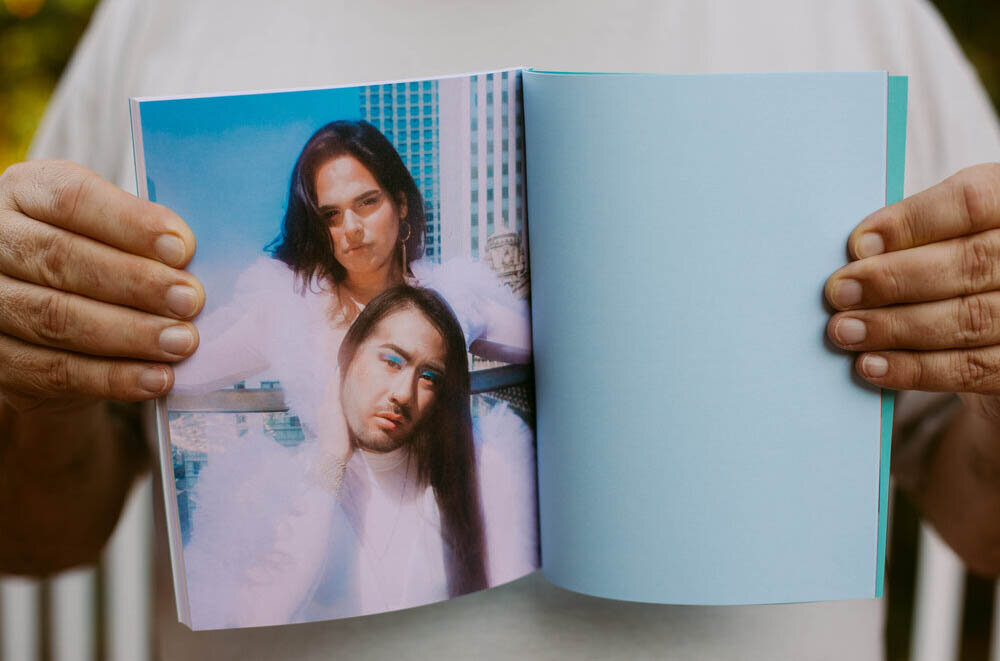
Self/Ser by River Coello, published by Homie House Press
RS: In some cases you’ve sought collaborators in a very intentional way. Tell me about the beibi boi series.
AM: beibi boi’s is a a four-part series welcoming collaborators of the male identifying body, for the first time! We built our practice encompassing the femme spectrum of identity. We ourselves, are femmes creating for us, by us, and about us. The space we have spent the past three years cultivating, has grown in ways that effected our sisters as well as our counterparts in ways we were just beginning to explore. I suppose that this is the ‘norm’ when trailblazing and experimenting in concept, medium, delivery, and audience. We felt we had arrived at a crossroad, where we could see the effects of a push back on male identifying individuals, specifically, in the mainstream when it comes to reclaiming our power as femmes. In the aftermath of #metoo and the stance that we at HHP take, to always believe women, we were weary of what was to come next. We didn't want to partake in an ‘us vs them’ scenario. It seemed many were there already, out of necessity, and we understood that. But, HHP still believed that bridgework was possible, what can I say, we are a hopeful crew. So in Jan 2019 (a year ago!), we launched the beibi boi’s! We chose to take a risk and hoped that our community would trust us. The sole reason for doing something like this was to continue to do bridgework no matter how intimidating or tumultuous it may become, because collaborative work is important and necessary for the happy rebellion. So, a year later, the fourth book is going to print this week! The final beibi boi, by, Theo Imani Marboah is coming so so soon, we cant wait for y’all to see it. Over all—the beibi boi series has been successful <3
RS: In 2019 you produced 13 books, a huge accomplishment for a small-but-mighty operation such as HHP. What can we expect in 2020?
AM: Ayayayay LOL I just asked Cate’ (my partner in HHP) this question… I told her hey we need to have our goals / dreams for 2020 meeting... and we have yet to do it. I think at this point we have it scheduled for this coming weekend. But I can tell you what we know for now :) we know that we are releasing these books with these tentative schedules! Yahoooooooooo the rest is TBD.
Theo Imani Marboah (currently - until v soon)
Bowie State Even The Score (released Jan 2020)
Trisha Prieto (February)
Raisul Islam (March)
Knox Roxs the sequel (April)
Cristobal Naranjo Guerra (May)
Noura Tafeche (July )
Mexicano MX (August)
Work_Play - Dani (Sept)
RS: Congratulations on your upcoming three-month residency! Where are you headed and what do you plan do accomplish there?
AM: Ghaaaaaaaaa im so excited, she’s going to Memphis! I leave in 10 days :) and ill be there from Feb 1 - April 30th. See you in spring, East coast! Hhp is goin to da south ^_^ I have been given the massive honor of getting this residency with Crosstown Arts that allows me 3months to fully focus on the continuation of my work at the intersection of two projects - Clear As Black and Diaspora Diction. So, although homie house always has a lot going on, it will be taking a backseat for me, for the first time in 3 years.. and my work as a photographer / researcher / artist is gonna be front and center. So so excited… gotta pack!
